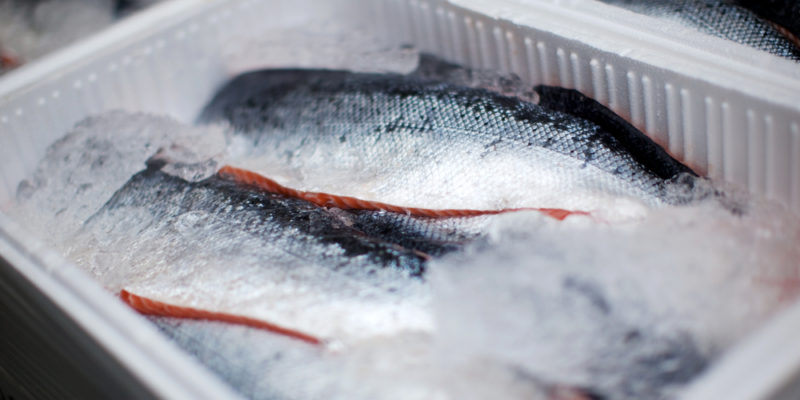How Logistics Providers Support Australia’s Seafood Industry
Australia’s seafood industry is a cornerstone of the nation’s economy, renowned globally for its premium products such as rock lobster, tuna, prawns, and abalone. In 2022–23, Australia’s seafood production was valued at over $3 billion, with exports playing a major role in feeding demand from Asian and North American markets. Ensuring the freshness, safety, and quality of these delicate products from ocean to plate requires a sophisticated and highly reliable logistics network.
Logistics providers are not simply moving boxes; they are critical partners for seafood suppliers, delivering cold chain expertise, rapid response capabilities, and market flexibility. In a competitive global environment where freshness is everything, the logistics operation can make or break a sale.
The Importance of Cold Chain Logistics in Seafood
Seafood is highly perishable, more so than most other food categories. Bacterial growth, enzymatic breakdown, and loss of moisture can occur rapidly if products are not kept within a strict temperature range, usually between 0°C and 4°C for fresh seafood.
Maintaining the integrity of the cold chain, from the moment the seafood is caught or harvested, through processing, storage, and transportation, is critical to ensure product quality, food safety, and compliance with health regulations.
Specialist logistics providers invest heavily in:
- Refrigerated trucks and containers: Built to maintain consistent low temperatures despite external environmental variations, especially vital across Australia’s hot and remote regions.
- Real-time temperature monitoring: IoT-enabled sensors track temperature and humidity throughout the journey, alerting operators immediately if there is a deviation.
- Rapid, efficient routing: Minimising the time from catch to consumer to preserve freshness, especially for exports to nearby Asian markets where timing is tight.
Without these systems, spoilage rates can soar, leading to massive financial losses and damage to Australia’s premium seafood brand reputation.
Specialised Handling and Compliance
Transporting seafood isn’t just about temperature control, it’s also about precision handling. Products like oysters, lobsters, and prawns require careful packaging to avoid physical damage. Live seafood, a growing segment particularly for exports to China and Southeast Asia, demands oxygenated water tanks, shock-absorbing packaging, and tailored loading processes.
Furthermore, logistics providers must navigate an evolving web of international regulations. Compliance with health certifications, traceability standards, and biosecurity measures is non-negotiable. Delays at border inspections due to documentation errors or substandard shipping practices can cause entire shipments to be destroyed or heavily discounted.
Providers with seafood logistics expertise streamline this process, managing the complex paperwork and ensuring that each shipment meets the destination country’s specific requirements.
Adapting to Market Shocks
The seafood industry is vulnerable to global events. For example, Australia’s rock lobster industry faced a major setback when China imposed import restrictions in 2020. Although restrictions eased in late 2024 (source), logistics providers played a crucial role in helping the industry pivot.
During the ban, freight specialists worked with exporters to find alternative markets in Southeast Asia, the Middle East, and the US. Airfreight solutions were quickly scaled up to move live lobsters and premium seafood into new regions, minimising financial losses.
The lesson: logistics providers who understand the seafood sector must be flexible, innovative, and global-minded to support Australian producers through political, economic, and environmental volatility.
Building Sustainable and Regional Growth
Sustainability is becoming a driving force in seafood logistics. Providers are investing in lower-emission refrigerated vehicles, optimised route planning to reduce fuel usage, and recyclable packaging for seafood products.
At the same time, logistics enables regional seafood communities, such as those in Tasmania, northern Queensland, and Western Australia, to access bigger markets. Efficient cold chain links between these regional hubs and international airports or shipping ports mean that even remote fisheries can compete globally.
By providing infrastructure, technology, and expertise, logistics companies not only safeguard the quality of Australian seafood but also strengthen regional economies, creating jobs and encouraging investment into sustainable fisheries.
Conclusion
Logistics providers are not just a behind-the-scenes player; they are an integral part of Australia’s seafood industry’s ability to thrive and expand. Through specialist cold chain management, regulatory expertise, market adaptability, and sustainable practices, they ensure that seafood reaches customers around the world at peak freshness and quality.
As demand for premium, sustainably sourced seafood continues to rise, logistics providers will be even more critical in helping Australian producers meet international expectations and stay competitive on the world stage.
